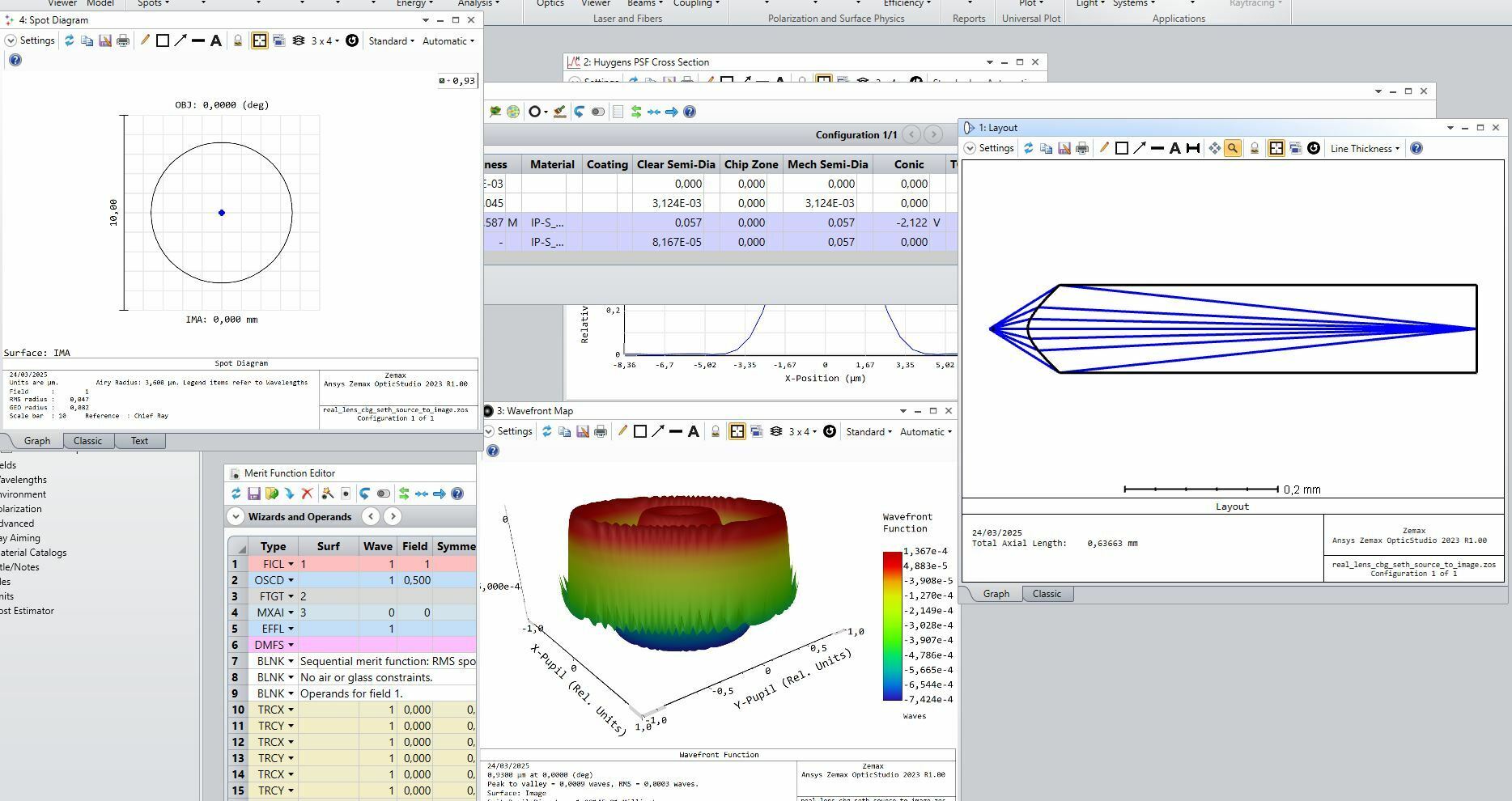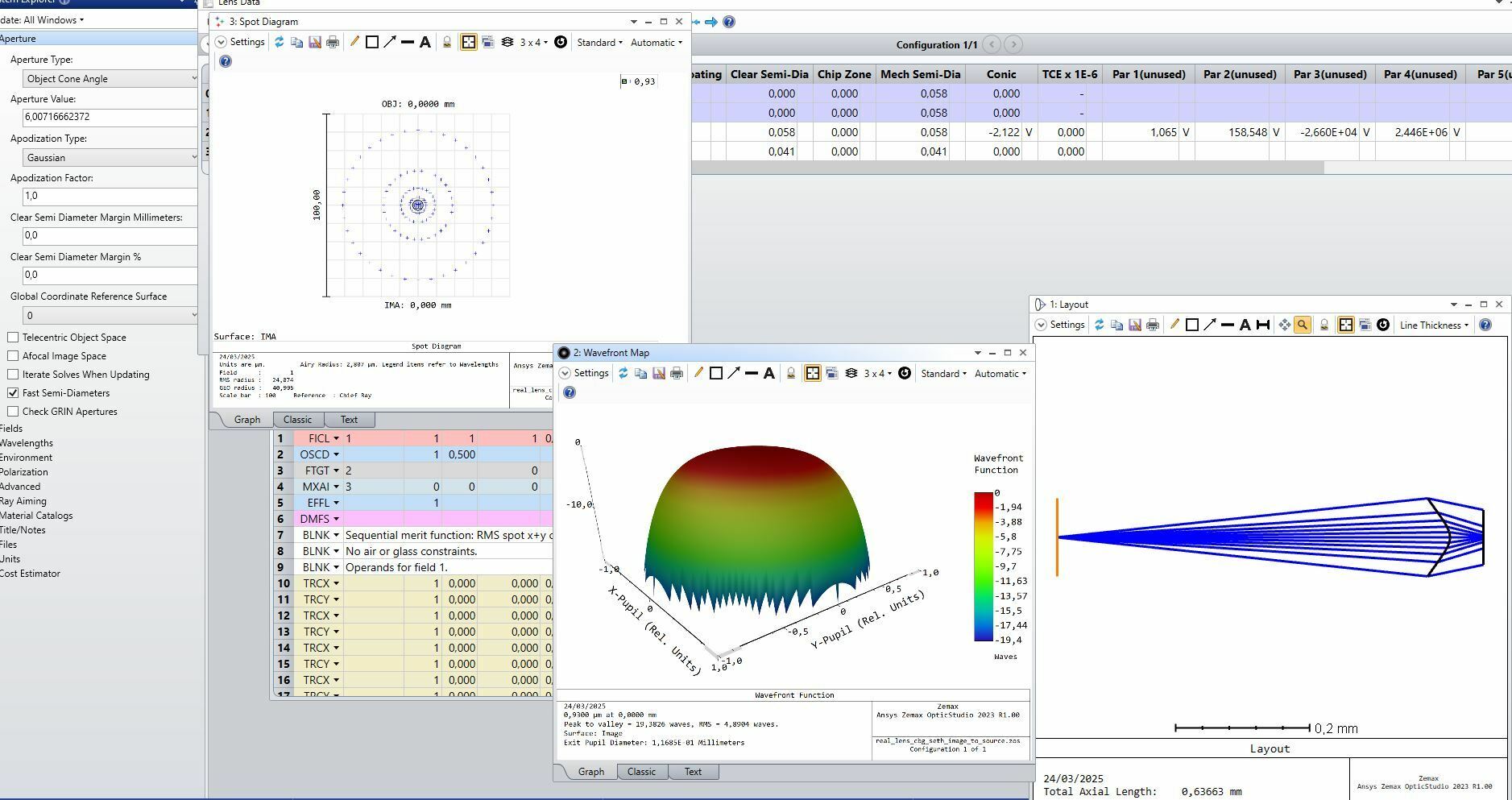Hello there friends from the zemax community,
I was wondering if someone could give me some guidance with a situation I have.
I have a finite conjugate system which images a single on-axis point to another on axis point. To perform this on-axis imaging, I have optimized a single aspherical surface.
In object space I have a point with a half angle of 30 degrees and on the image side the cone of incident angles is equal to 6 degrees (half divergence).
This is how my current system looks like:

From this you can see that the on-axis performance is diffraction limited in this configuraiton.
Now, I am interested in evaluating the performance of this system but on the reverse direction, i.e, I flip the entire system. Now I have a point source with a cone divergence of 6 degrees. This is how the system looks like:

Oection the performance is far from ideal.
In my opinion this is because in the forward case, even though the imaging performance is diffraction limited, the rays in image space do not really coincide with the rays originating from an ideal point. Therefore, once I flit the system, I do not get the same performance.
The question here for me is: What am I missing here? How can I model the “correct” performance of my system in the reverse direction? Is there any way to set the ray directions in object space? Or is this really a problem with my design? The more interesting question for me would be: Is it possible to achieve a good performance in both directions (forward/backward) simultaneously with a single surface? Or is this some sort of limitation in this case? Any hint on what should I check for or care for while carrying on with the surface optimization?
Any feedback or comment will be appreciated.

